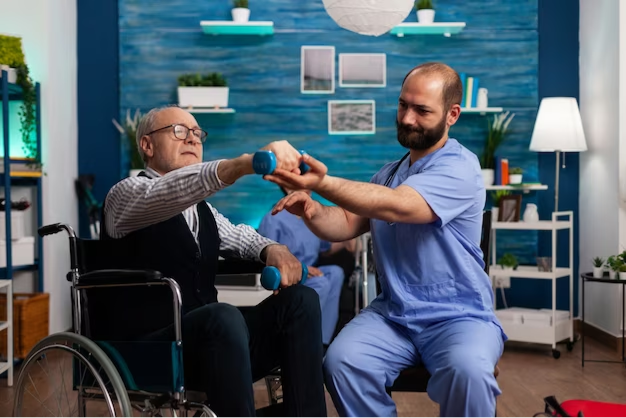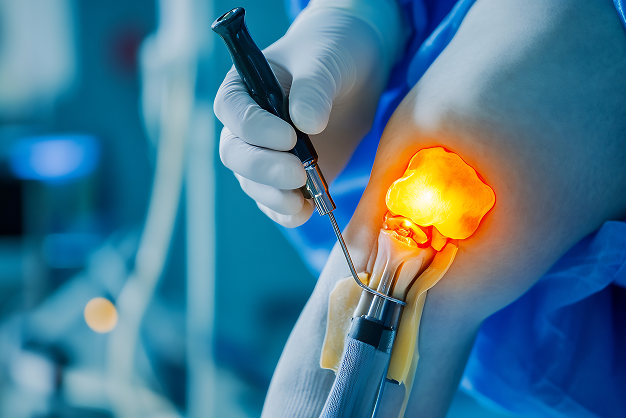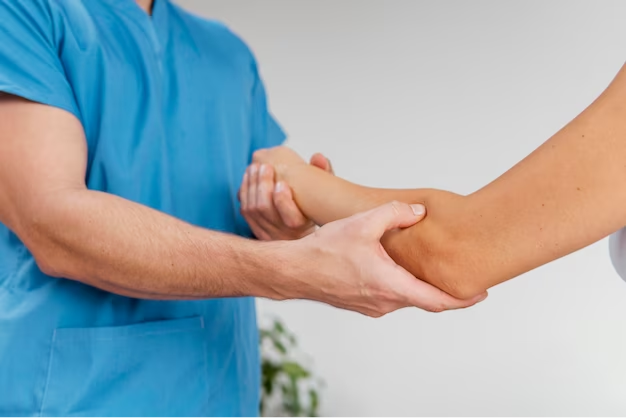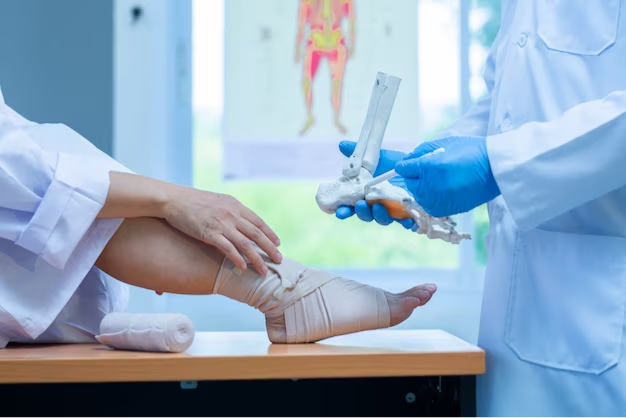
Orthopaedics, Joint Replacement and Arthroscopy
Aging Gracefully: Orthopedic Care for Seniors
December 2023

Author: Dr. Anand Kumaroth S
(MBBS (Govt. Medical College, Calicut), MS Orthopaedics (Maulana Azad Medical College, Delhi): Senior Consultant - Orthopedics
I still remember the phone call from Director of Caritas Hospital, requesting an article on knee replacement for the Caritasian magazine. That girl's face appeared in my mind when I was thinking about what experiences I had in the last seventeen years of my orthopedic career to write about.
Anamika (name changed) was seen again in front of Caritas Cafeteria AD 345. The 23-year-old girl has changed beyond recognition at first glance. "Doctor, I have no knee pain now and everything is doing fine. It's the third month Joined the college (after the surgery)."- she said. Now I told them that what I am doing is robotic knee replacement. I shared in their happiness and walked away. My mind flashed to her nine months ago.
The 23-year-old college student came to the OP in a wheelchair unable to walk at all. Arthritis (rheumatoid arthritis) knees have limited range of motion. Referred for knee replacement by leading rheumatologist. All treatments like Ayurveda/Homeoic have failed. After initial tests and X-ray, two legs It was found that the knees were completely worn out and deep pits were formed in the bones. "If both knees are replaced then it will be possible to walk comfortably. This is the first time in the world that such a young girl will have both knees replaced. If you dare let's go ahead" I stopped. Then the surgery was explained in detail. I also the problems to come. Also gave them time to catch up and sent them on their way to decide.
Both the girl's knees were replaced in April. After the surgery, she fully cooperated with my instructions and the physiotherapist. Gradually the pain decreased significantly. The mobility of the legs is complete. A week later at discharge I told them - "The oldest patient I ever had a knee replacement on was 89. But I didn't have that much tension when I did their surgery, go get your life back."
Wear and tear is the deterioration of the cartilage in the knees due to age, injuries, excess weight, and rheumatic diseases. Or arthritis. Cartilage that has worn out is impossible to regenerate because it is made of cells that the human body cannot regenerate. Wear goes through about four stages. Pain, leg cramps, and difficulty with daily activities increase as the stages worsen.
No, it has been scientifically proven that genetic factors do not play a major role in knee wear and tear
Commonly found in people of Asian countries. In the condition of " constitutional tibia varus" the legs can bend without wear. This can also occur in people with deficiencies of certain vitamins (eg vitamin D) (osteomalacia).
As mentioned earlier, it is not possible to restore worn cartilage. However, non-surgical treatments may be considered in patients with stage one to early stage three wear. These are Body weight management and changes in routines like Mild pain relievers, Intra-knee injections (PRP, steroid drugs, hyaluronic acid, etc.)
These treatments help reduce pain and swelling in the knees. But in the last half of the third stage and the fourth stage, surgery is the only solution.
These injections have not been scientifically proven to reduce wear and tear other than to reduce pain. "PRP injection” s enough to see only as an advertising text!
Knees are mainly divided into three parts. They are like Medial, Lateral and Patello Femoral. In most knee replacement surgeries, only the worn part of the medial and lateral compartments is carefully replaced and the cobalt chromium alloy and polyethylene components are fixed in place with bone cement. Owing to the reduced thickness of the ovary in Indian patients, The splint is usually not changed to prevent fractures.
If wear and tear is neglected, the ligaments will weaken over time. The knee can be replaced with some special (semi-constrained, fully constrained) of these knees.
is possible In such cases, the surgery is completed using Augments, Wedges, Sleeves (type of implant parts).
Osteotomy surgery straightens the curves of the leg, and it is possible to go forward without knee replacement for a few more years. But people over 60 years of age, overweight, people with ligament damage, People with gout (rheumatoid arthritis) usually do not benefit from this surgery.
It usually takes an hour to do a knee replacement. With modern surgical techniques, the operation can be completed through a 10 cm incision, and the knee can be replaced in 95% of patients without blood transfusion. This is not a keyhole surgery.
Complications of all major surgeries apply to this surgery. But in 99% of patients this surgery can be done very safely.
Usually no more than five days of admission is required. Instead of taking rest, walk and start physiotherapy the day after the operation. To walk unaided and climb stairs within two weeks, is possible After a month it is possible to go on long journeys.
Both knees can be replaced at the same time for anyone under the age of 70 who does not have serious medical conditions, and for those who are not, both knees can be operated on approximately three months apart.
Robotic controlled knee replacement surgery called 'Mecoplasty' is the most advanced procedure available in the world today. Macoplasty in Madhyatrivutamkur is now available only in Caritha.
Knee replacement surgery is an approximately 97% success rate for people of any age who have worn out enough to require surgery. Pain from the incisions can last up to 2 weeks and can be controlled with mild pain relievers. Many people forget that after three months the knee is transplanted.

Orthopaedics, Joint Replacement and Arthroscopy
December 2023

Orthopaedics, Joint Replacement and Arthroscopy
December 2023

Orthopaedics, Joint Replacement and Arthroscopy
December 2023